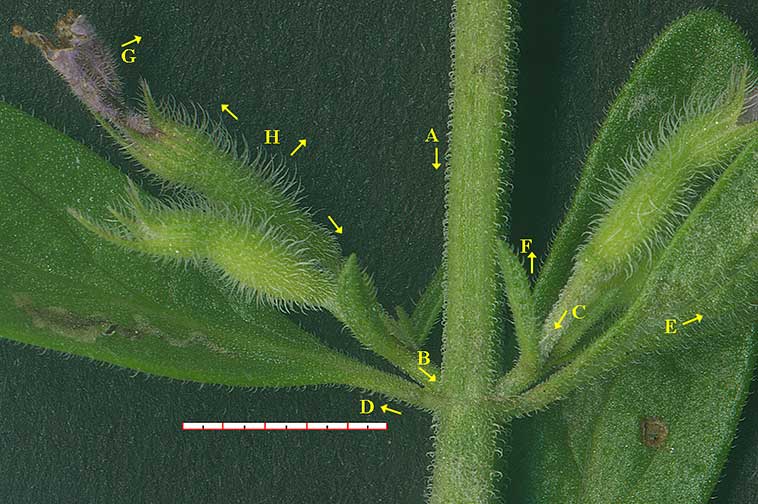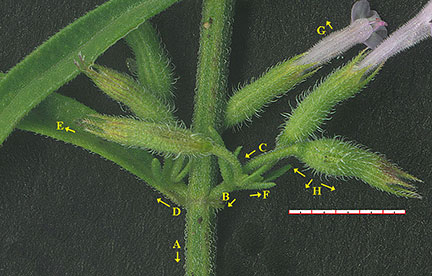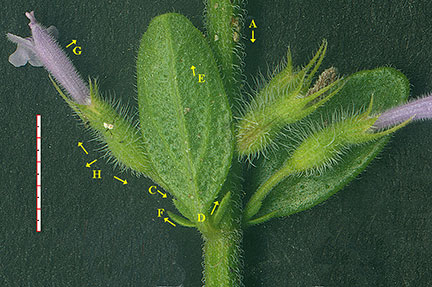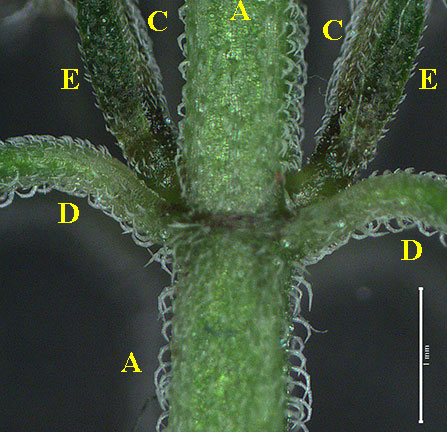
Nearly all plant surfaces in the Hedeoma drummondii complex are evenly covered with multicelular uniseriate trichomes, but these hairs vary a great deal depending upon their location, and even upon the seasonal ontogeny of the plant. (Contrast the October and December stem partials of H. drummondii above.) In the images below eight distinct anatomical areas are labeled A—H.


|

|
|---|---|
| H. drummondii | H. reverchonii var. serpyllifolia |
This pattern is shared by all 3 taxa. One must wonder what is going on here. I would speculate that the trichome orientation impedes insect access to the axillary shoot meristem and the ovary at the base of the calyx. Trichomes of the stem and pedicel are directed down against insects ascending from below. Those of the leaf (including bracteole) and petiole are directed upward (as are the upper calyx trichomes) against insects alighting on the leaves. Possibly more substantial protective mechanisms are the dense annuli within the calyx and the corolla tubes, as well as the calyx teeth.
  |
|---|
| H. drummondii trichomes (left: 20x; right: 40x) |